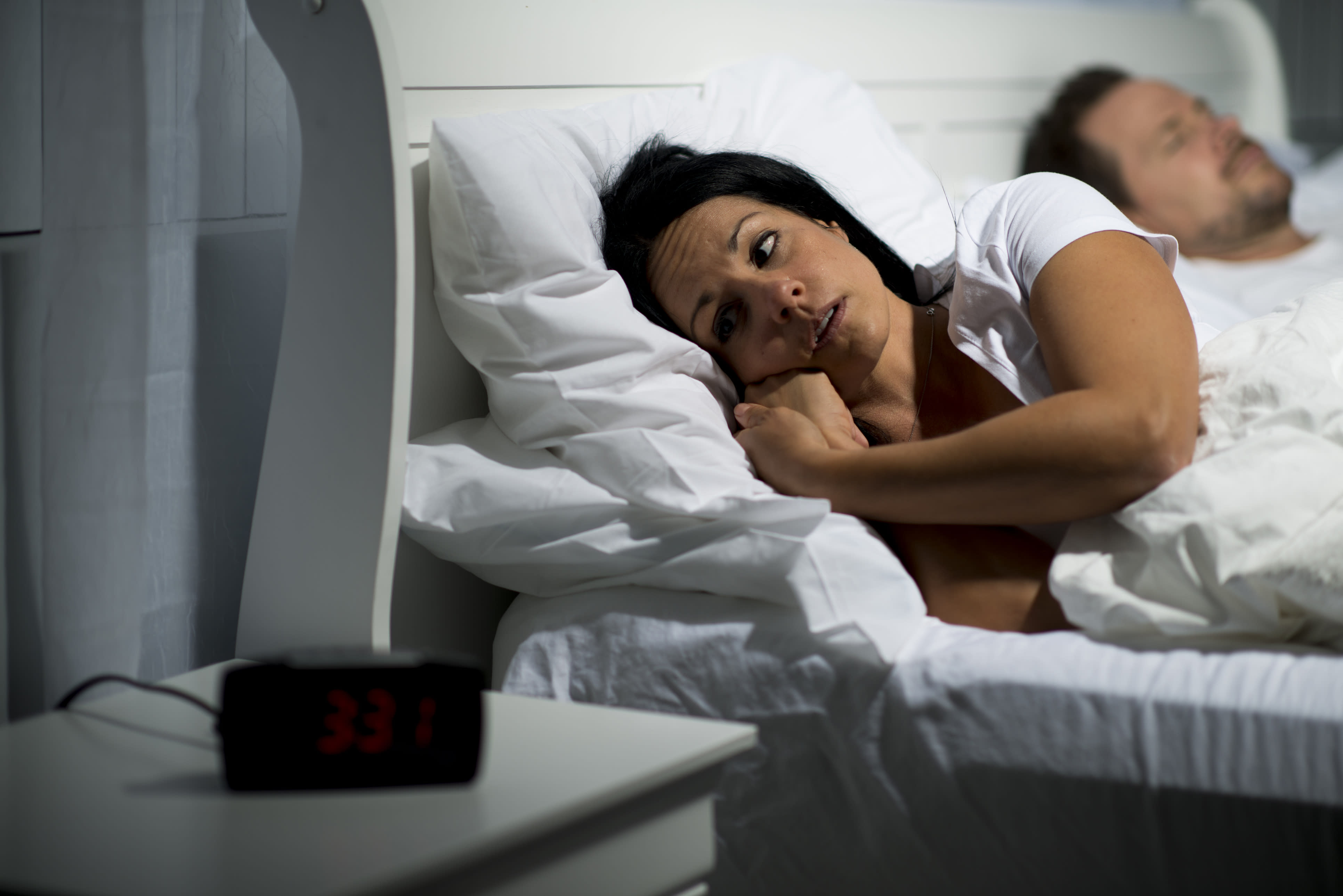Problems waking up. Understanding Sleep Inertia: Why Waking Up is Hard and How to Overcome It
Why do we experience difficulty waking up in the morning. What causes sleep inertia and how does it affect our cognitive performance. How can we minimize the effects of sleep drunkenness and improve our morning routine. What role do circadian rhythms play in our ability to wake up easily. Are there effective strategies for combating sleep inertia.
The Science Behind Sleep Inertia: Unraveling the Morning Struggle
Sleep inertia, often described as the grogginess and disorientation experienced upon waking, is a common phenomenon that affects many individuals. This state of impaired cognitive and motor performance can last anywhere from a few minutes to several hours, significantly impacting our ability to function effectively in the morning.
Research has shown that sleep inertia is characterized by decreased alertness, slowed reaction times, and reduced decision-making abilities. Understanding the underlying mechanisms of sleep inertia can help us develop strategies to minimize its effects and improve our morning routines.

What causes sleep inertia?
Sleep inertia is primarily caused by the brain’s transition from sleep to wakefulness. During this period, different regions of the brain awaken at varying rates, leading to a temporary state of functional impairment. Factors contributing to sleep inertia include:
- Sleep stage upon awakening
- Sleep duration and quality
- Circadian rhythms
- Individual chronotype (morning lark vs. night owl)
- Environmental factors
The Impact of Sleep Stages on Morning Grogginess
The stage of sleep from which we awaken plays a crucial role in determining the severity of sleep inertia. Waking up during deep sleep (slow-wave sleep) typically results in more pronounced sleep inertia compared to waking from lighter sleep stages.
How do sleep stages influence sleep inertia?
During deep sleep, our brain activity is characterized by slow delta waves. When abruptly awakened from this state, the brain requires more time to transition to full wakefulness, resulting in more severe sleep inertia. In contrast, waking from lighter sleep stages, such as REM sleep, generally leads to less intense sleep inertia.
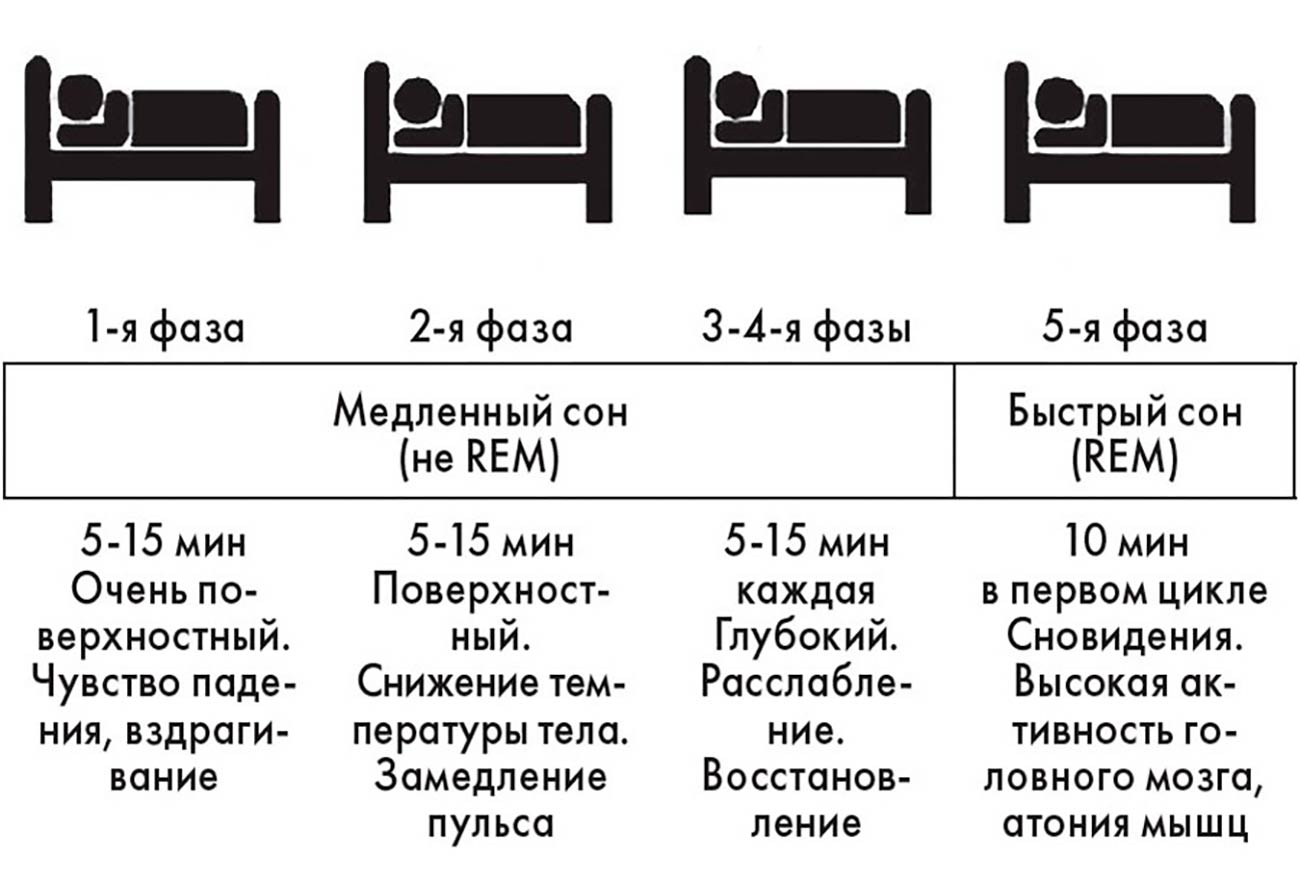
Circadian Rhythms and Their Role in Morning Alertness
Our internal biological clock, known as the circadian rhythm, significantly influences our sleep-wake cycle and overall alertness throughout the day. This internal clock is regulated by various factors, including light exposure, hormones, and body temperature.
How do circadian rhythms affect our ability to wake up?
The circadian rhythm influences the production of hormones such as cortisol and melatonin, which play crucial roles in regulating sleep and wakefulness. Cortisol levels typically peak in the early morning, promoting alertness, while melatonin levels decrease, facilitating the transition to wakefulness.
Individuals whose sleep-wake schedules align with their natural circadian rhythms often experience less severe sleep inertia and find it easier to wake up in the morning.
The Role of Individual Chronotype in Morning Alertness
Chronotype refers to an individual’s natural tendency to be more alert and active at certain times of the day. This genetic predisposition influences our sleep-wake patterns and can significantly impact our experience of sleep inertia.
![]()
How does chronotype affect sleep inertia?
Morning larks, individuals who naturally prefer earlier sleep and wake times, often experience less severe sleep inertia compared to night owls, who tend to feel more alert later in the day. Understanding your chronotype can help you optimize your sleep schedule and minimize the effects of sleep inertia.
Strategies for Combating Sleep Inertia and Improving Morning Alertness
While sleep inertia is a natural physiological process, there are several strategies you can employ to minimize its effects and improve your morning alertness:
- Gradual awakening: Use a smart alarm that monitors your sleep cycles and wakes you during lighter sleep stages.
- Light exposure: Expose yourself to bright light upon waking to help regulate your circadian rhythm.
- Consistent sleep schedule: Maintain a regular sleep-wake routine to align with your circadian rhythm.
- Avoid sleep deprivation: Ensure you get adequate sleep duration to minimize sleep inertia severity.
- Morning exercise: Engage in light physical activity to increase alertness and boost energy levels.
- Hydration: Drink water upon waking to combat dehydration-induced grogginess.
- Caffeine consumption: Consider consuming caffeine strategically to counteract sleep inertia effects.
The Neurobiology of Sleep Inertia: Understanding Brain Activity During Awakening
Recent neuroimaging studies have provided valuable insights into the brain activity patterns associated with sleep inertia. These findings help explain the cognitive and motor impairments experienced during the awakening process.

What happens in the brain during sleep inertia?
During sleep inertia, different brain regions exhibit varying levels of activity and connectivity. The prefrontal cortex, responsible for executive functions and decision-making, shows reduced activity immediately upon awakening. Simultaneously, areas involved in arousal and alertness, such as the brainstem and thalamus, gradually increase their activity levels.
This asynchronous reactivation of brain regions contributes to the temporary impairment of cognitive and motor functions characteristic of sleep inertia. As the brain transitions to full wakefulness, these activity patterns normalize, leading to improved alertness and performance.
Sleep Inertia in Special Populations: Shift Workers and Emergency Responders
Sleep inertia can have particularly significant implications for individuals working in high-risk occupations or those with irregular sleep schedules. Shift workers and emergency responders, for example, may need to perform critical tasks immediately upon waking, making the effects of sleep inertia potentially dangerous.
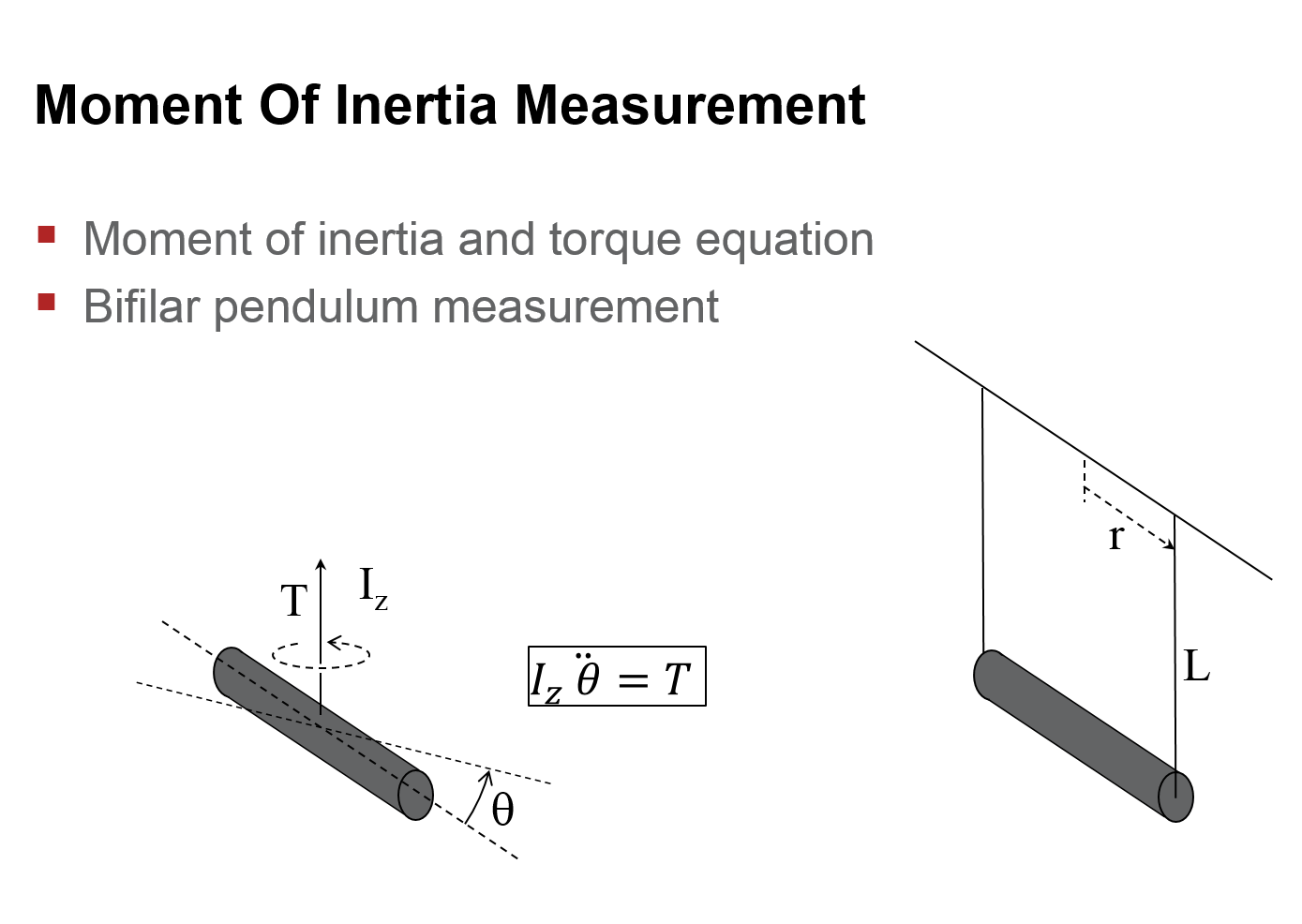
How can shift workers and emergency responders manage sleep inertia?
Several strategies can help mitigate the impact of sleep inertia in these populations:
- Scheduled naps: Strategic napping can help reduce sleep debt and minimize sleep inertia severity.
- Light therapy: Exposure to bright light during work shifts can help regulate circadian rhythms.
- Caffeine management: Carefully timed caffeine consumption can improve alertness during critical periods.
- Education and awareness: Training on sleep hygiene and the risks associated with sleep inertia can improve safety.
- Gradual task engagement: When possible, allow for a transition period before engaging in high-risk activities.
The Role of Technology in Combating Sleep Inertia
As our understanding of sleep inertia grows, technological innovations are emerging to help individuals manage and minimize its effects. These advancements aim to optimize the wake-up process and improve morning alertness.
What technologies can help reduce sleep inertia?
Several technological solutions have been developed to address sleep inertia:

- Smart alarm systems: These devices monitor sleep cycles and aim to wake users during lighter sleep stages.
- Light therapy devices: Gradually increasing light exposure before and during awakening can help regulate circadian rhythms.
- Wearable sleep trackers: These devices provide insights into sleep patterns and can help optimize sleep schedules.
- Temperature-regulating bedding: Maintaining optimal sleep temperature can improve sleep quality and reduce sleep inertia.
- Cognitive training apps: Some applications offer brain-training exercises designed to improve morning alertness.
While these technologies show promise, it’s important to note that their effectiveness can vary among individuals. Combining technological solutions with traditional sleep hygiene practices often yields the best results in managing sleep inertia.
The Connection Between Sleep Disorders and Severe Sleep Inertia
Certain sleep disorders can exacerbate the effects of sleep inertia, leading to more severe and prolonged symptoms. Understanding these connections can help individuals identify potential underlying issues and seek appropriate treatment.

Which sleep disorders are associated with severe sleep inertia?
Several sleep disorders have been linked to more intense sleep inertia:
- Sleep apnea: This condition, characterized by repeated breathing interruptions during sleep, can lead to fragmented sleep and more severe sleep inertia.
- Narcolepsy: Individuals with narcolepsy often experience excessive daytime sleepiness and may have difficulty transitioning from sleep to wakefulness.
- Delayed sleep phase syndrome: This circadian rhythm disorder can result in misalignment between an individual’s sleep-wake cycle and societal norms, potentially worsening sleep inertia.
- Idiopathic hypersomnia: This condition is characterized by excessive sleepiness and difficulty waking up, often accompanied by severe sleep inertia.
If you consistently experience severe sleep inertia that significantly impacts your daily functioning, it may be worth consulting a sleep specialist to rule out underlying sleep disorders.
The Impact of Age on Sleep Inertia and Morning Alertness
As we age, our sleep patterns and circadian rhythms undergo significant changes. These age-related alterations can influence the experience of sleep inertia and overall morning alertness.

How does age affect sleep inertia?
Research has shown that sleep inertia experiences can vary across different age groups:
- Children and adolescents: Generally experience more difficulty waking up due to higher sleep needs and shifted circadian rhythms.
- Young adults: Often struggle with sleep inertia due to irregular sleep schedules and social jet lag.
- Middle-aged adults: May experience varying degrees of sleep inertia depending on lifestyle factors and sleep quality.
- Older adults: Tend to have earlier sleep-wake cycles and may experience less severe sleep inertia, but are more prone to sleep fragmentation.
Understanding these age-related changes can help individuals adapt their sleep habits and morning routines to minimize the impact of sleep inertia throughout their lives.
The Relationship Between Diet, Nutrition, and Sleep Inertia
Our dietary habits and nutritional status can significantly influence sleep quality and, consequently, the severity of sleep inertia. Exploring the connections between nutrition and sleep inertia can provide valuable insights for improving morning alertness.

How do diet and nutrition affect sleep inertia?
Several nutritional factors can impact sleep quality and sleep inertia:
- Macronutrient balance: The ratio of carbohydrates, proteins, and fats in our diet can influence sleep architecture and morning alertness.
- Micronutrient deficiencies: Lack of certain vitamins and minerals, such as vitamin D, magnesium, and B vitamins, can affect sleep quality and circadian rhythms.
- Hydration: Proper hydration is crucial for maintaining optimal sleep quality and reducing morning grogginess.
- Timing of meals: Late-night eating can disrupt sleep patterns and potentially worsen sleep inertia.
- Caffeine and alcohol consumption: Both substances can significantly impact sleep quality and morning alertness when consumed close to bedtime.
By optimizing dietary habits and addressing nutritional deficiencies, individuals may be able to improve their sleep quality and reduce the severity of sleep inertia.
The Psychological Aspects of Sleep Inertia and Morning Mood
While sleep inertia is primarily a physiological phenomenon, psychological factors can play a significant role in our perception of morning grogginess and overall mood upon waking. Understanding these psychological aspects can help develop more effective strategies for managing sleep inertia.
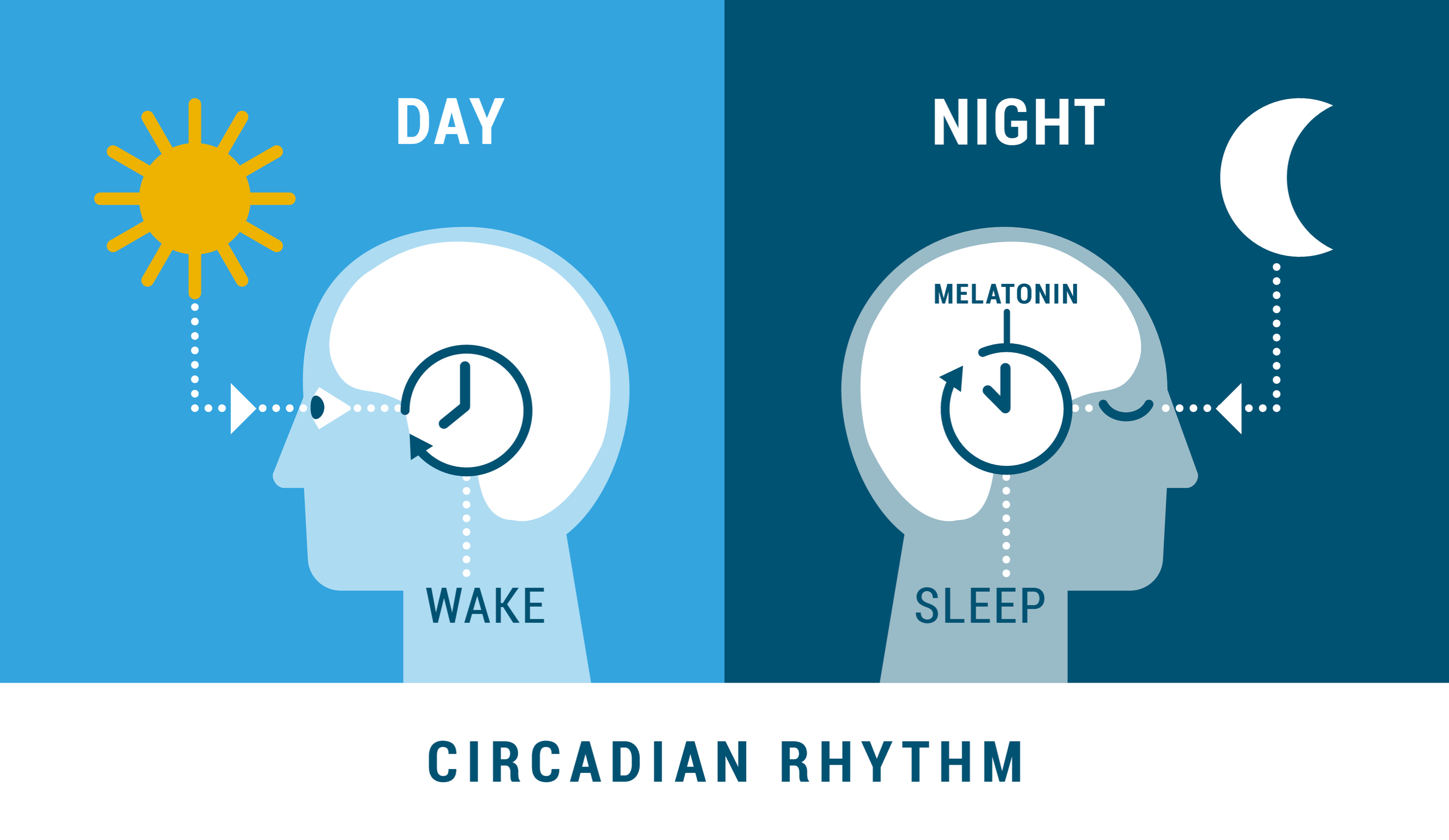
How do psychological factors influence sleep inertia?
Several psychological elements can impact our experience of sleep inertia:
- Anticipation and expectations: Our beliefs about how difficult it will be to wake up can influence our actual experience.
- Stress and anxiety: High levels of stress or anxiety can disrupt sleep quality and exacerbate sleep inertia symptoms.
- Morning routine perception: Having a positive or negative outlook on our morning activities can affect our motivation to wake up.
- Cognitive reframing: How we interpret and respond to feelings of grogginess can impact our ability to overcome sleep inertia.
- Mindfulness and relaxation techniques: Practicing mindfulness upon waking may help manage the effects of sleep inertia.
By addressing these psychological factors, individuals may be able to improve their subjective experience of sleep inertia and enhance their morning mood and productivity.
Environmental Factors and Their Influence on Sleep Inertia
The environment in which we sleep and wake up can significantly impact the severity of sleep inertia and our ability to transition to full alertness. Optimizing our sleep environment and morning surroundings can help minimize the effects of sleep inertia.

How do environmental factors affect sleep inertia?
Several environmental elements can influence our sleep quality and morning alertness:
- Bedroom temperature: Maintaining an optimal sleep temperature (typically between 60-67°F or 15-19°C) can improve sleep quality and reduce sleep inertia.
- Noise levels: Minimizing nighttime noise disturbances and using white noise or nature sounds can promote better sleep and easier awakening.
- Light exposure: Controlling light levels during sleep and upon waking can help regulate circadian rhythms and improve morning alertness.
- Air quality: Ensuring proper ventilation and air purification can contribute to better sleep quality and reduced sleep inertia.
- Bedding and mattress comfort: Comfortable and supportive sleep surfaces can improve sleep quality and potentially reduce sleep inertia severity.
By optimizing these environmental factors, individuals can create a sleep-friendly atmosphere that promotes better rest and easier awakening.
The Future of Sleep Inertia Research and Potential Breakthroughs
As our understanding of sleep inertia continues to grow, researchers are exploring new avenues for managing and potentially eliminating its effects. These emerging areas of study hold promise for developing more effective strategies to combat morning grogginess and improve overall sleep health.

What are the future directions in sleep inertia research?
Several exciting areas of research are currently being explored:
- Genetic factors: Identifying genetic markers associated with sleep inertia susceptibility could lead to personalized interventions.
- Neuromodulation techniques: Non-invasive brain stimulation methods may help accelerate the transition from sleep to wakefulness.
- Pharmacological interventions: Development of targeted medications to combat sleep inertia while minimizing side effects.
- Advanced sleep monitoring: More sophisticated home sleep monitoring devices could provide personalized recommendations for optimizing sleep and reducing inertia.
- Artificial intelligence and machine learning: These technologies could help predict and prevent severe sleep inertia episodes based on individual sleep patterns and environmental factors.
As research in these areas progresses, we may see significant advancements in our ability to manage sleep inertia and improve overall sleep health. However, it’s important to approach new findings and interventions with caution and always consult with healthcare professionals before trying new treatments or strategies.
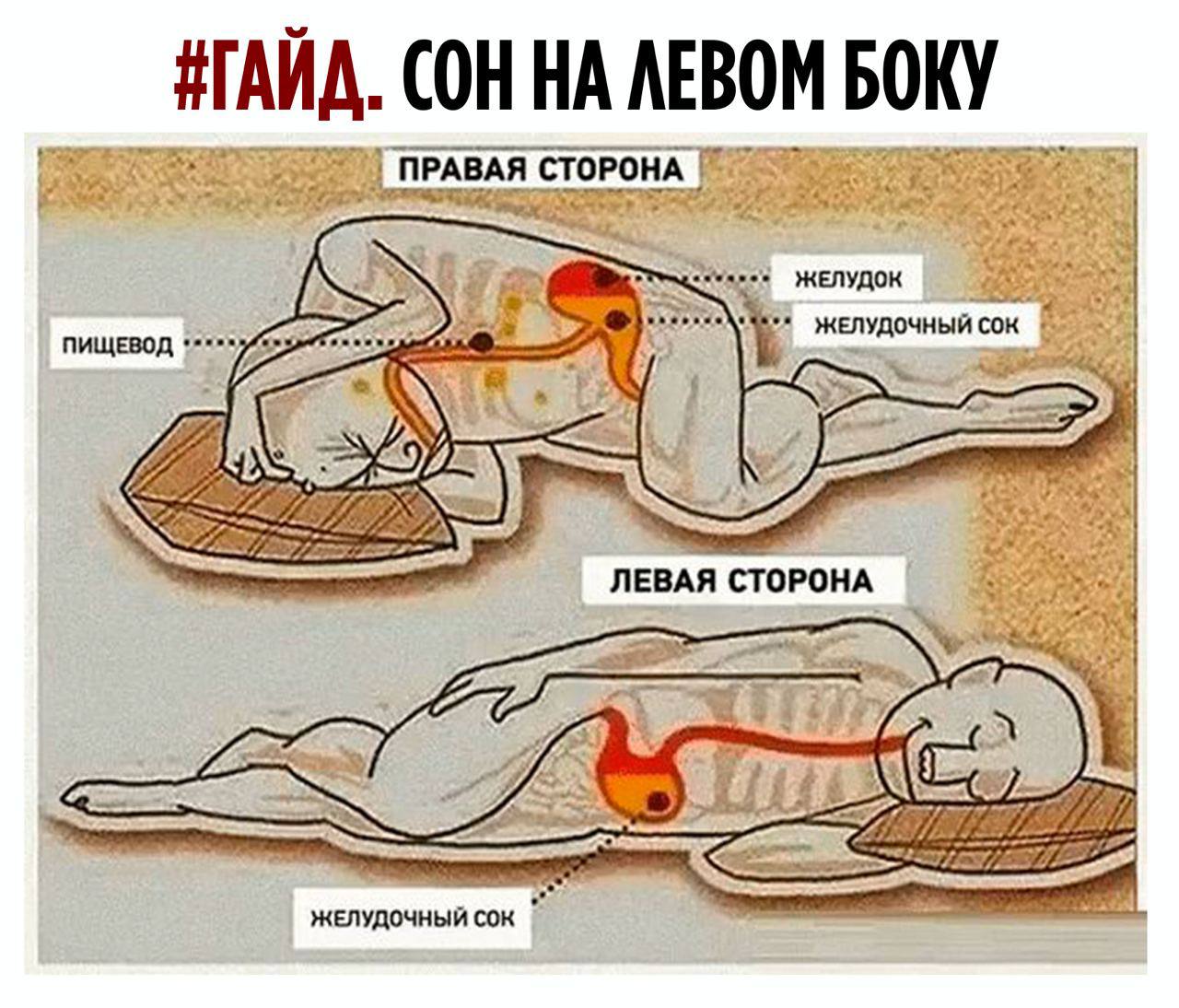
Waking up is the hardest thing I do all day: Sleep inertia and sleep drunkenness
1. Horne J, Moseley R. Sudden early-morning awakening impairs immediate tactical planning in a changing ‘emergency’ scenario. J Sleep Res. 2011;20:275–8. [PubMed] [Google Scholar]
*2. Smith-Coggins R, Howard SK, Mac DT, Wang C, Kwan S, Rosekind MR, et al. Improving alertness and performance in emergency department physicians and nurses: the use of planned naps. Annals of emergency medicine. 2006;48:596–604. e1–3. [PubMed] [Google Scholar]
3. International classification of sleep disorders. 3. Darien, IL: American Academy of Sleep Medicine; 2014. [Google Scholar]
4. Ohayon MM, Priest RG, Zulley J, Smirne S. The place of confusional arousals in sleep and mental disorders: findings in a general population sample of 13,057 subjects. The Journal of nervous and mental disease. 2000;188:340–8. [PubMed] [Google Scholar]
*5. Ohayon MM, Mahowald MW, Leger D. Are confusional arousals pathological? Neurology. 2014;83:834–41. [PubMed] [Google Scholar]
2014;83:834–41. [PubMed] [Google Scholar]
*6. Kanady JC, Harvey AG. Development and Validation of the Sleep Inertia Questionnaire (SIQ) and Assessment of Sleep Inertia in Analogue and Clinical Depression. Cognitive therapy and research. 2015;39:601–12. [PMC free article] [PubMed] [Google Scholar]
7. Amaral O, Garrido A, Pereira C, Veiga N, Serpa C, Sakellarides C. Sleep patterns and insomnia among portuguese adolescents: a cross-sectional study. Atencion primaria / Sociedad Espanola de Medicina de Familia y Comunitaria. 2014;46(Suppl 5):191–4. [PMC free article] [PubMed] [Google Scholar]
8. Adan A, Natale V. Gender differences in morningness-eveningness preference. Chronobiology international. 2002;19:709–20. [PubMed] [Google Scholar]
9. Roenneberg T, Wirz-Justice A, Merrow M. Life between clocks: daily temporal patterns of human chronotypes. Journal of biological rhythms. 2003;18:80–90. [PubMed] [Google Scholar]
10. Peter-Derex L, Magnin M, Bastuji H. Heterogeneity of arousals in human sleep: A stereo-electroencephalographic study. NeuroImage. 2015;123:229–44. [PubMed] [Google Scholar]
NeuroImage. 2015;123:229–44. [PubMed] [Google Scholar]
11. Vyazovskiy VV, Cui N, Rodriguez AV, Funk C, Cirelli C, Tononi G. The dynamics of cortical neuronal activity in the first minutes after spontaneous awakening in rats and mice. Sleep. 2014;37:1337–47. [PMC free article] [PubMed] [Google Scholar]
12. Van Dongen HP, Price NJ, Mullington JM, Szuba MP, Kapoor SC, Dinges DF. Caffeine eliminates psychomotor vigilance deficits from sleep inertia. Sleep. 2001;24:813–9. [PubMed] [Google Scholar]
13. Porkka-Heiskanen T, Kalinchuk AV. Adenosine, energy metabolism and sleep homeostasis. Sleep Med Rev. 2011;15:123–35. [PubMed] [Google Scholar]
14. Ferrara M, De Gennaro L, Casagrande M, Bertini M. Selective slow-wave sleep deprivation and time-of-night effects on cognitive performance upon awakening. Psychophysiology. 2000;37:440–6. [PubMed] [Google Scholar]
15. Ferrara M, De Gennaro MFL, Bertini M. Voluntary oculomotor performance upon awakening after total sleep deprivation. Sleep. 2000;23:801–11. [PubMed] [Google Scholar]
Sleep. 2000;23:801–11. [PubMed] [Google Scholar]
16. Hilditch CJ, Dorrian J, Centofanti SA, Van Dongen HP, Banks S. Sleep inertia associated with a 10-min nap before the commute home following a night shift: A laboratory simulation study. Accident; analysis and prevention. 2015 [PubMed] [Google Scholar]
17. Krauchi K, Cajochen C, Wirz-Justice A. Waking up properly: is there a role of thermoregulation in sleep inertia? J Sleep Res. 2004;13:121–7. [PubMed] [Google Scholar]
18. Clow A, Hucklebridge F, Stalder T, Evans P, Thorn L. The cortisol awakening response: more than a measure of HPA axis function. Neuroscience and biobehavioral reviews. 2010;35:97–103. [PubMed] [Google Scholar]
19. Matchock RL. Circadian and sleep episode duration influences on cognitive performance following the process of awakening. International review of neurobiology. 2010;93:129–51. [PubMed] [Google Scholar]
20. Marzano C, Ferrara M, Moroni F, De Gennaro L. Electroencephalographic sleep inertia of the awakening brain. Neuroscience. 2011;176:308–17. [PubMed] [Google Scholar]
Neuroscience. 2011;176:308–17. [PubMed] [Google Scholar]
21. Ogilvie R, Simons I. Falling asleep and waking up: A comparison of EEG spectra. In: Ogilvie R, Broughton R, editors. Sleep, arousal, and performance. Boston, MA: Birkhouse; 1992. pp. 73–87. [Google Scholar]
22. Ferrara M, Curcio G, Fratello F, Moroni F, Marzano C, Pellicciari MC, et al. The electroencephalographic substratum of the awakening. Behav Brain Res. 2006;167:237–44. [PubMed] [Google Scholar]
23. Ferrara M, De Gennaro L, Bertini M. Time-course of sleep inertia upon awakening from nighttime sleep with different sleep homeostasis conditions. Aviation, space, and environmental medicine. 2000;71:225–9. [PubMed] [Google Scholar]
24. Tassi P, Bonnefond A, Engasser O, Hoeft A, Eschenlauer R, Muzet A. EEG spectral power and cognitive performance during sleep inertia: the effect of normal sleep duration and partial sleep deprivation. Physiology & behavior. 2006;87:177–84. [PubMed] [Google Scholar]
*25. Gorgoni M, Ferrara M, D’Atri A, Lauri G, Scarpelli S, Truglia I, et al. EEG topography during sleep inertia upon awakening after a period of increased homeostatic sleep pressure. Sleep Med. 2015;16:883–90. [PubMed] [Google Scholar]
Gorgoni M, Ferrara M, D’Atri A, Lauri G, Scarpelli S, Truglia I, et al. EEG topography during sleep inertia upon awakening after a period of increased homeostatic sleep pressure. Sleep Med. 2015;16:883–90. [PubMed] [Google Scholar]
26. Broughton RJ. Sleep disorders: disorders of arousal? Enuresis, somnambulism, and nightmares occur in confusional states of arousal, not in “dreaming sleep” Science. 1968;159:1070–8. [PubMed] [Google Scholar]
27. Ferrara M, De Gennaro L, Ferlazzo F, Curcio G, Cristiani R, Bertini M. Topographical changes in N1-P2 amplitude upon awakening from recovery sleep after slow-wave sleep deprivation. Clin Neurophysiol. 2002;113:1183–90. [PubMed] [Google Scholar]
28. Ferrara M, De Gennaro L, Ferlazzo F, Curcio G, Barattucci M, Bertini M. Auditory evoked responses upon awakening from sleep in human subjects. Neurosci Lett. 2001;310:145–8. [PubMed] [Google Scholar]
29. Kaida K, Nittono H, Hayashi M, Hori T. Effects of self-awakening on sleep structure of a daytime short nap and on subsequent arousal levels.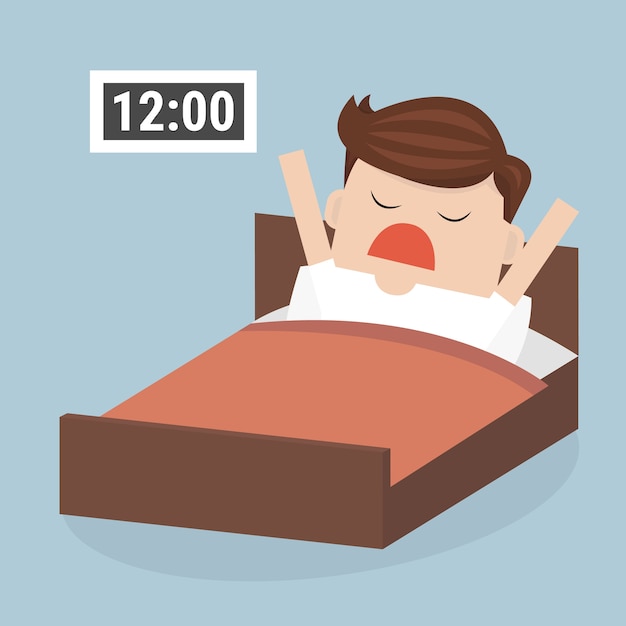 Perceptual and motor skills. 2003;97:1073–84. [PubMed] [Google Scholar]
Perceptual and motor skills. 2003;97:1073–84. [PubMed] [Google Scholar]
30. Kaida K, Ogawa K, Nittono H, Hayashi M, Takahashi M, Hori T. Self-awakening, sleep inertia, and P3 amplitude in elderly people. Perceptual and motor skills. 2006;102:339–51. [PubMed] [Google Scholar]
31. Asaoka S, Masaki H, Ogawa K, Murphy TI, Fukuda K, Yamazaki K. Performance monitoring during sleep inertia after a 1-h daytime nap. J Sleep Res. 2010;19:436–43. [PubMed] [Google Scholar]
32. De Gennaro L, Bertini M, Ferrara M, Curcio G, Cristiani R, Romei V, et al. Intracortical inhibition and facilitation upon awakening from different sleep stages: a transcranial magnetic stimulation study. Eur J Neurosci. 2004;19:3099–104. [PubMed] [Google Scholar]
33. Kuboyama T, Hori A, Sato T, Mikami T, Yamaki T, Ueda S. Changes in cerebral blood flow velocity in healthy young men during overnight sleep and while awake. Electroencephalogr Clin Neurophysiol. 1997;102:125–31. [PubMed] [Google Scholar]
34. Hajak G, Klingelhofer J, Schulz-Varszegi M, Matzander G, Sander D, Conrad B, et al. Relationship between cerebral blood flow velocities and cerebral electrical activity in sleep. Sleep. 1994;17:11–9. [PubMed] [Google Scholar]
Hajak G, Klingelhofer J, Schulz-Varszegi M, Matzander G, Sander D, Conrad B, et al. Relationship between cerebral blood flow velocities and cerebral electrical activity in sleep. Sleep. 1994;17:11–9. [PubMed] [Google Scholar]
*35. Balkin TJ, Braun AR, Wesensten NJ, Jeffries K, Varga M, Baldwin P, et al. The process of awakening: a PET study of regional brain activity patterns mediating the re-establishment of alertness and consciousness. Brain. 2002;125:2308–19. [PubMed] [Google Scholar]
36. Wu CW, Liu PY, Tsai PJ, Wu YC, Hung CS, Tsai YC, et al. Variations in connectivity in the sensorimotor and default-mode networks during the first nocturnal sleep cycle. Brain connectivity. 2012;2:177–90. [PubMed] [Google Scholar]
*37. Tsai PJ, Chen SC, Hsu CY, Wu CW, Wu YC, Hung CS, et al. Local awakening: regional reorganizations of brain oscillations after sleep. NeuroImage. 2014;102(Pt 2):894–903. [PubMed] [Google Scholar]
38. Dorsey CM, Lukas SE, Moore CM, Tartarini WL, Parow AM, Villafuerte RA, et al. Phosphorous31 magnetic resonance spectroscopy after total sleep deprivation in healthy adult men. Sleep. 2003;26:573–7. [PubMed] [Google Scholar]
Phosphorous31 magnetic resonance spectroscopy after total sleep deprivation in healthy adult men. Sleep. 2003;26:573–7. [PubMed] [Google Scholar]
39. Tassi P, Muzet A. Sleep inertia. Sleep Med Rev. 2000;4:341–53. [PubMed] [Google Scholar]
*40. Burke TM, Scheer FA, Ronda JM, Czeisler CA, Wright KP., Jr Sleep inertia, sleep homeostatic and circadian influences on higher-order cognitive functions. J Sleep Res. 2015;24:364–71. [PMC free article] [PubMed] [Google Scholar]
41. Scheer FA, Shea TJ, Hilton MF, Shea SA. An endogenous circadian rhythm in sleep inertia results in greatest cognitive impairment upon awakening during the biological night. Journal of biological rhythms. 2008;23:353–61. [PMC free article] [PubMed] [Google Scholar]
42. Silva EJ, Duffy JF. Sleep inertia varies with circadian phase and sleep stage in older adults. Behavioral neuroscience. 2008;122:928–35. [PMC free article] [PubMed] [Google Scholar]
43. Splaingard M, Hayes J, Smith GA. Impairment of reaction time among children awakened during stage 4 sleep. Sleep. 2007;30:104–8. [PubMed] [Google Scholar]
Sleep. 2007;30:104–8. [PubMed] [Google Scholar]
44. Matchock RL, Mordkoff JT. Effects of sleep stage and sleep episode length on the alerting, orienting, and conflict components of attention. Exp Brain Res. 2014;232:811–20. [PubMed] [Google Scholar]
45. Hilditch CJ, Centofanti SA, Dorrian J, Banks S. A 30-Minute, But Not a 10-Minute Nighttime Nap is Associated with Sleep Inertia. Sleep. 2015 [PMC free article] [PubMed] [Google Scholar]
46. Signal TL, van den Berg MJ, Mulrine HM, Gander PH. Duration of sleep inertia after napping during simulated night work and in extended operations. Chronobiology international. 2012;29:769–79. [PubMed] [Google Scholar]
47. Groeger JA, Lo JC, Burns CG, Dijk DJ. Effects of sleep inertia after daytime naps vary with executive load and time of day. Behavioral neuroscience. 2011;125:252–60. [PubMed] [Google Scholar]
48. Hofer-Tinguely G, Achermann P, Landolt HP, Regel SJ, Retey JV, Durr R, et al. Sleep inertia: performance changes after sleep, rest and active waking. Brain research Cognitive brain research. 2005;22:323–31. [PubMed] [Google Scholar]
Brain research Cognitive brain research. 2005;22:323–31. [PubMed] [Google Scholar]
49. Brooks A, Lack L. A brief afternoon nap following nocturnal sleep restriction: which nap duration is most recuperative? Sleep. 2006;29:831–40. [PubMed] [Google Scholar]
50. Tietzel AJ, Lack LC. The short-term benefits of brief and long naps following nocturnal sleep restriction. Sleep. 2001;24:293–300. [PubMed] [Google Scholar]
51. Tietzel AJ, Lack LC. The recuperative value of brief and ultra-brief naps on alertness and cognitive performance. J Sleep Res. 2002;11:213–8. [PubMed] [Google Scholar]
52. Purnell MT, Feyer AM, Herbison GP. The impact of a nap opportunity during the night shift on the performance and alertness of 12-h shift workers. J Sleep Res. 2002;11:219–27. [PubMed] [Google Scholar]
53. Reyner LA, Horne JA. Suppression of sleepiness in drivers: combination of caffeine with a short nap. Psychophysiology. 1997;34:721–5. [PubMed] [Google Scholar]
*54. Newman RA, Kamimori GH, Wesensten NJ, Picchioni D, Balkin TJ. Caffeine gum minimizes sleep inertia. Perceptual and motor skills. 2013;116:280–93. [PubMed] [Google Scholar]
Caffeine gum minimizes sleep inertia. Perceptual and motor skills. 2013;116:280–93. [PubMed] [Google Scholar]
55. Harrison EM, Gorman MR, Mednick SC. The effect of narrowband 500 nm light on daytime sleep in humans. Physiology & behavior. 2011;103:197–202. [PubMed] [Google Scholar]
56. Santhi N, Groeger JA, Archer SN, Gimenez M, Schlangen LJ, Dijk DJ. Morning sleep inertia in alertness and performance: effect of cognitive domain and white light conditions. PLoS One. 2013;8:e79688. [PMC free article] [PubMed] [Google Scholar]
57. Gimenez MC, Hessels M, van de Werken M, de Vries B, Beersma DG, Gordijn MC. Effects of artificial dawn on subjective ratings of sleep inertia and dim light melatonin onset. Chronobiology international. 2010;27:1219–41. [PubMed] [Google Scholar]
58. Van De Werken M, Gimenez MC, De Vries B, Beersma DG, Van Someren EJ, Gordijn MC. Effects of artificial dawn on sleep inertia, skin temperature, and the awakening cortisol response. J Sleep Res. 2010;19:425–35. [PubMed] [Google Scholar]
2010;19:425–35. [PubMed] [Google Scholar]
*59. Thompson A, Jones H, Gregson W, Atkinson G. Effects of dawn simulation on markers of sleep inertia and post-waking performance in humans. European journal of applied physiology. 2014;114:1049–56. [PubMed] [Google Scholar]
60. Tassi P, Nicolas A, Dewasmes G, Eschenlauer R, Ehrhart J, Salame P, et al. Effects of noise on sleep inertia as a function of circadian placement of a one-hour nap. Perceptual and motor skills. 1992;75:291–302. [PubMed] [Google Scholar]
61. Hirose A, Nagasaka A. The effects of the level of alertness during the rest period on subsequent performance. International journal of occupational safety and ergonomics : JOSE. 2003;9:479–90. [PubMed] [Google Scholar]
62. Roth B, Nevsimalova S, Rechtschaffen A. Hypersomnia with “sleep drunkenness” Arch Gen Psychiatry. 1972;26:456–62. [PubMed] [Google Scholar]
63. Roth B, Nevsimalova S, Sagova V, Paroubkova D, Horakova A. Neurological, psychological and polygraphic findings in sleep drunkenness.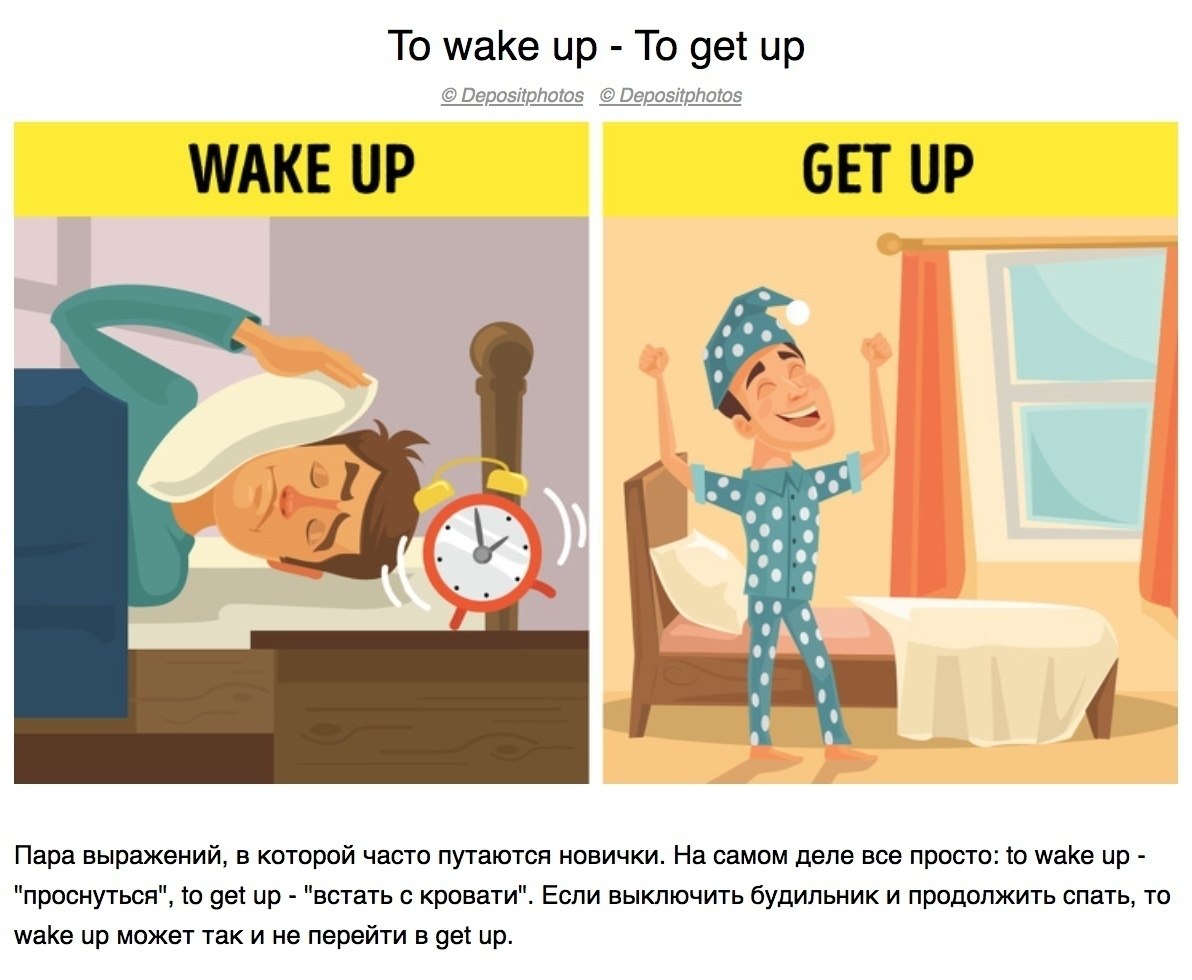 Schweizer Archiv fur Neurologie, Neurochirurgie und Psychiatrie = Archives suisses de neurologie, neurochirurgie et de psychiatrie. 1981;129:209–22. [PubMed] [Google Scholar]
Schweizer Archiv fur Neurologie, Neurochirurgie und Psychiatrie = Archives suisses de neurologie, neurochirurgie et de psychiatrie. 1981;129:209–22. [PubMed] [Google Scholar]
64. Roth B. Narcolepsy and Hypersomnia. New York: Karger; 1980. [Google Scholar]
65. Solheim B, Langsrud K, Kallestad H, Olsen A, Bjorvatn B, Sand T. Difficult morning awakening from rapid eye movement sleep and impaired cognitive function in delayed sleep phase disorder patients. Sleep Med. 2014;15:1264–8. [PubMed] [Google Scholar]
66. Vernet C, Leu-Semenescu S, Buzare MA, Arnulf I. Subjective symptoms in idiopathic hypersomnia: beyond excessive sleepiness. J Sleep Res. 2010;19:525–34. [PubMed] [Google Scholar]
67. Billiard M, Sonka K. Idiopathic hypersomnia. Sleep Med Rev. 2015;29:23–33. [PubMed] [Google Scholar]
68. Mullington J, Broughton R. Daytime sleep inertia in narcolepsy-cataplexy. Sleep. 1994;17:69–76. [PubMed] [Google Scholar]
69. Godbout R, Montplaisir J. All-day performance variations in normal and narcoleptic subjects. Sleep. 1986;9:200–4. [PubMed] [Google Scholar]
Sleep. 1986;9:200–4. [PubMed] [Google Scholar]
70. Mazzetti M, Campi C, Mattarozzi K, Plazzi G, Tuozzi G, Vandi S, et al. Semantic priming effect during REM-sleep inertia in patients with narcolepsy. Brain Res Bull. 2006;71:270–8. [PubMed] [Google Scholar]
71. Wise MS. Childhood narcolepsy. Neurology. 1998;50:S37–42. [PubMed] [Google Scholar]
72. Nevsimalova S, Jara C, Prihodova I, Kemlink D, Sonka K, Skibova J. Clinical features of childhood narcolepsy. Can cataplexy be foretold? European journal of paediatric neurology : EJPN : official journal of the European Paediatric Neurology Society. 2011;15:320–5. [PubMed] [Google Scholar]
73. Bastuji H, Perrin F, Garcia-Larrea L. Event-related potentials during forced awakening: a tool for the study of acute sleep inertia. J Sleep Res. 2003;12:189–206. [PubMed] [Google Scholar]
74. Montplaisir J, Fantini L. Idiopathic hypersomnia: a diagnostic dilemma. A commentary of “Idiopathic hypersomnia” (M. Billiard and Y. Dauvilliers) Sleep Med Rev. 2001;5:361–2. [PubMed] [Google Scholar]
2001;5:361–2. [PubMed] [Google Scholar]
75. Schmidt HS, Clark RW, Hyman PR. Protriptyline: an effective agent in the treatment of the narcolepsy-cataplexy syndrome and hypersomnia. Am J Psychiatry. 1977;134:183–5. [PubMed] [Google Scholar]
76. Leu-Semenescu S, Louis P, Arnulf I. Benefits and risk of sodium oxybate in idiopathic hypersomnia versus narcolepsy type 1: a chart review. Sleep Med. 2016;17:38–44. [PubMed] [Google Scholar]
77. Kelty E, Martyn V, O’Neil G, Hulse G. Use of subcutaneous flumazenil preparations for the treatment of idiopathic hypersomnia: A case report. J Psychopharmacol. 2014 [PubMed] [Google Scholar]
78. Rye DB, Bliwise DL, Parker K, Trotti LM, Saini P, Fairley J, et al. Modulation of Vigilance in the Primary Hypersomnias by Endogenous Enhancement of GABAA Receptors. Sci Transl Med. 2012;4:161ra51. [PubMed] [Google Scholar]
79. Schneider-Helmert D, Schenker J, Gnirss F. Deficient blood pressure regulation in a case of hypersomnia with sleep drunkenness. Electroencephalogr Clin Neurophysiol. 1980;48:230–2. [PubMed] [Google Scholar]
Electroencephalogr Clin Neurophysiol. 1980;48:230–2. [PubMed] [Google Scholar]
80. Bagai K, Malow BA. A novel approach to treating morning sleep inertia in narcolepsy. J Clin Sleep Med. 2010;6:77–8. [PMC free article] [PubMed] [Google Scholar]
81. Cassano GB, Benvenuti A, Miniati M, Calugi S, Mula M, Maggi L, et al. The factor structure of lifetime depressive spectrum in patients with unipolar depression. Journal of affective disorders. 2009;115:87–99. [PMC free article] [PubMed] [Google Scholar]
82. Ritter PS, Marx C, Lewtschenko N, Pfeiffer S, Leopold K, Bauer M, et al. The characteristics of sleep in patients with manifest bipolar disorder, subjects at high risk of developing the disease and healthy controls. J Neural Transm (Vienna) 2012;119:1173–84. [PubMed] [Google Scholar]
*83. Peter-Derex L, Perrin F, Petitjean T, Garcia-Larrea L, Bastuji H. Discriminating neurological from psychiatric hypersomnia using the forced awakening test. Neurophysiologie clinique = Clinical neurophysiology. 2013;43:171–9. [PubMed] [Google Scholar]
2013;43:171–9. [PubMed] [Google Scholar]
84. Papolos DF, Teicher MH, Faedda GL, Murphy P, Mattis S. Clinical experience using intranasal ketamine in the treatment of pediatric bipolar disorder/fear of harm phenotype. Journal of affective disorders. 2013;147:431–6. [PubMed] [Google Scholar]
85. Norden MJ, Avery DH. A controlled study of dawn simulation in subsyndromal winter depression. Acta psychiatrica Scandinavica. 1993;88:67–71. [PubMed] [Google Scholar]
86. Avery DH, Kouri ME, Monaghan K, Bolte MA, Hellekson C, Eder D. Is dawn simulation effective in ameliorating the difficulty awakening in seasonal affective disorder associated with hypersomnia? Journal of affective disorders. 2002;69:231–6. [PubMed] [Google Scholar]
87. Casagrande M, Bertini M. Night-time right hemisphere superiority and daytime left hemisphere superiority: a repatterning of laterality across wake-sleep-wake states. Biological psychology. 2008;77:337–42. [PubMed] [Google Scholar]
88. Daya VG, Bentley AJ. Perception of experimental pain is reduced after provoked waking from rapid eye movement sleep. J Sleep Res. 2010;19:317–22. [PubMed] [Google Scholar]
Daya VG, Bentley AJ. Perception of experimental pain is reduced after provoked waking from rapid eye movement sleep. J Sleep Res. 2010;19:317–22. [PubMed] [Google Scholar]
89. Miccoli L, Versace F, Koterle S, Cavallero C. Comparing sleep-loss sleepiness and sleep inertia: lapses make the difference. Chronobiology international. 2008;25:725–44. [PubMed] [Google Scholar]
90. Howard ME, Radford L, Jackson ML, Swann P, Kennedy GA. The effects of a 30-minute napping opportunity during an actual night shift on performance and sleepiness in shift workers. Biological Rhythm Research. 2010;41:137–48. [Google Scholar]
91. Signal TL, Gander PH, Anderson H, Brash S. Scheduled napping as a countermeasure to sleepiness in air traffic controllers. J Sleep Res. 2009;18:11–9. [PubMed] [Google Scholar]
92. Smith SS, Kilby S, Jorgensen G, Douglas JA. Napping and nightshift work: Effects of a short nap on psychomotor vigilance and subjective sleepiness in health workers. Sleep and Biological Rhythms. 2007;5:117–25. [Google Scholar]
2007;5:117–25. [Google Scholar]
93. Kubo T, Takahashi M, Takeyama H, Matsumoto S, Ebara T, Murata K, et al. How do the timing and length of a night-shift nap affect sleep inertia? Chronobiology international. 2010;27:1031–44. [PubMed] [Google Scholar]
94. Lovato N, Lack L, Ferguson S, Tremaine R. The effects of a 30-min nap during night shift following a prophylactic sleep in the afternoon. Sleep and Biological Rhythms. 2009;7:34–42. [Google Scholar]
95. Matchock RL, Mordkoff JT. Visual attention, reaction time, and self-reported alertness upon awakening from sleep bouts of varying lengths. Exp Brain Res. 2007;178:228–39. [PubMed] [Google Scholar]
96. Takeyama H, Matsumoto S, Murata K, Ebara T, Kubo T, Tachi N, et al. Effects of the length and timing of nighttime naps on task performance and physiological function. Revista de saude publica. 2004;38(Suppl):32–7. [PubMed] [Google Scholar]
97. Wakasa M, Uemura S, Ito W. Relationship Between Mobility and Arousal Level After Waking Up. J Geriatr Phys Ther. 2016;39:14–9. [PubMed] [Google Scholar]
J Geriatr Phys Ther. 2016;39:14–9. [PubMed] [Google Scholar]
98. Wertz AT, Ronda JM, Czeisler CA, Wright KP., Jr Effects of sleep inertia on cognition. JAMA. 2006;295:163–4. [PubMed] [Google Scholar]
99. Anderson KN, Pilsworth S, Sharples LD, Smith IE, Shneerson JM. Idiopathic hypersomnia: a study of 77 cases. Sleep. 2007;30:1274–81. [PMC free article] [PubMed] [Google Scholar]
100. Bassetti C, Aldrich MS. Idiopathic hypersomnia. A series of 42 patients. Brain. 1997;120:1423–35. [PubMed] [Google Scholar]
101. Bassetti C, Gugger M, Bischof M, Mathis J, Sturzenegger C, Werth E, et al. The narcoleptic borderland: a multimodal diagnostic approach including cerebrospinal fluid levels of hypocretin-1 (orexin A) Sleep Med. 2003;4:7–12. [PubMed] [Google Scholar]
102. Martinez-Rodriguez JE, Iranzo A, Casamitjana R, Graus F, Santamaria J. Comparative analysis of patients with narcolepsy-cataplexy, narcolepsy without cataplexy and idiopathic hypersomnia. Medicina clinica. 2007;128:361–4. [PubMed] [Google Scholar]
2007;128:361–4. [PubMed] [Google Scholar]
103. Vernet C, Arnulf I. Idiopathic hypersomnia with and without long sleep time: a controlled series of 75 patients. Sleep. 2009;32:753–9. [PMC free article] [PubMed] [Google Scholar]
When You Have Trouble Waking Up
Is it so hard to fall asleep you can’t wake up in the morning? Here’s how to embrace your inner early bird.
Written by Jennifer Dixon
- Sleep Phase Disorders
- How to Wake Up More Easily
Brian Cyphers has always had trouble falling asleep at a “normal” hour. A few years ago, when the 24-year-old Chicagoan was dozing off between 3 and 5 in the morning and had to wake up at 6:30 to get to his job as a data entry clerk at a lab, he knew it was time to seek help.
Cyphers sought assistance from Lisa Shives, MD, medical director of Northshore Sleep Medicine in Evanston, Ill., and a specialist in sleep disorders. Shives frequently sees patients who want to alter their night owl ways. “People can modify their sleep patterns, but it’s not easy,” Shives says. Being a “morning” vs. “night” person is so ingrained in one’s nature that Shives sometimes tells late-nighters to seek careers with delayed start times.
“People can modify their sleep patterns, but it’s not easy,” Shives says. Being a “morning” vs. “night” person is so ingrained in one’s nature that Shives sometimes tells late-nighters to seek careers with delayed start times.
The reason Shives’ job is so difficult might lie in our genes. Two sleep disorders — advanced sleep phase syndrome, which causes bedtimes of between 6 p.m. and 9 p.m., and delayed sleep phase, where patients fall asleep between 1 a.m. and 4 a.m. — are both often inherited. Advanced sleep phase is less common, affecting less than 1% of middle-aged and older adults. As for delayed sleep phase syndrome, researchers don’t know how many people have it, but (to name one group of people) 7% to 16% of young adults do, according to the International Classification of Sleep Disorders.
The greater incidence of delayed sleep phase may explain why night owls seek help more often than larks — there are simply more of them. In addition, their shut-eye patterns frequently interrupt normal school or work schedules because their late bedtimes cause difficulty waking up at an appropriate hour.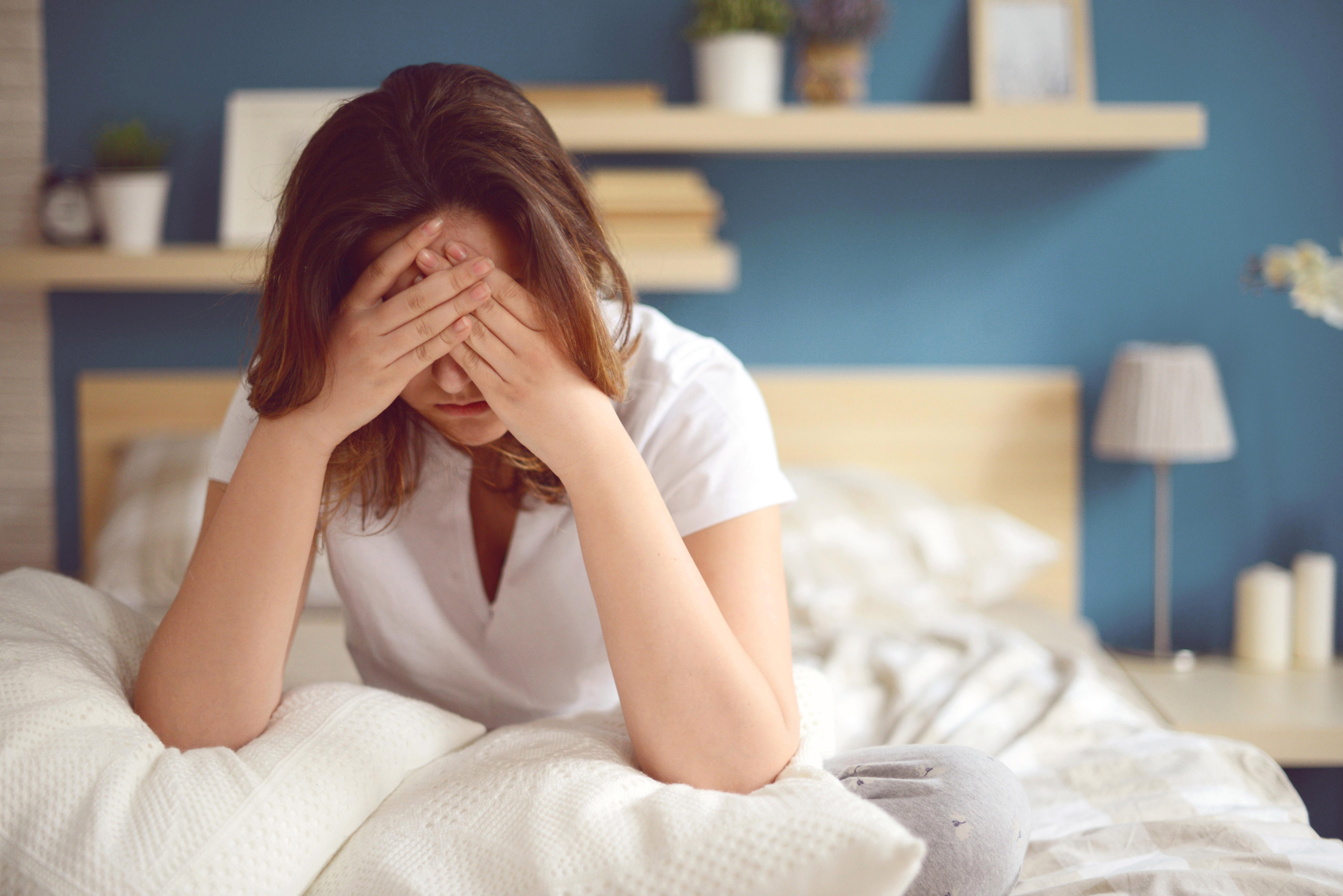
Beyond genes, sleep patterns are influenced by a strong biological pull. The body’s circadian rhythm dictates what time a person falls asleep and wakes up, and that can be very difficult to change. “Normally, I can help them a bit,” Shives says. “If patients are going to bed at 4 in the morning, I’m not going to get them to 11 p.m. But I can roll them back to 1 or 2 a.m., and that generally makes them pretty happy.”
And 1 a.m. to 2 a.m. is Cyphers’ new bedtime, too — not optimal, but an improvement nonetheless. “I don’t feel like I can take on the world every day, but I do feel better,” he says.
Want to become more of a lark? Sleep disorder specialist Lisa Shives, MD, has some suggestions for embracing your inner morning person:
Move your bedtime back by 15 minutes every three to four days. On these days, also wake up 15 minutes earlier. Adhere to this plan seven days a week (not just weekdays) until you’re falling asleep at — or close to — the desired hour.
Get sunlight. Natural sunlight helps reset your circadian clock. If you are a night owl, set your alarm for 7 a.m. and get outside for 30 minutes to have breakfast or to walk the dog. Also, keep your shades open so your room fills with light in the morning to help you wake up.
Shut off electronic media or bright lights two hours before bedtime.
Take 0.5 to 1 milligram of melatonin before you want to go to bed; this will help set your circadian rhythm so you can fall asleep at a more appropriate time. Ask a sleep specialist when you should take it.
If these methods don’t work, speak to a sleep specialist. Night owls, like shift workers, might have increased risk of diabetes, obesity, heart disease, and certain cancers. One option you can ask your doctor about is light therapy. This treatment allows you to get light from a small light box to help reset your body clock, without medication.
Above all, remember that these steps are difficult and require discipline, so you really must want to change your sleep patterns.
Top Picks
Can’t get out of bed? You may have disania
Image Credit, Getty Images
You may not think there are many reasons to get out of bed. It’s warm in there, it’s cold outside, and you can get rid of the problem by simply pressing the “Stop” button on your alarm clock.
On October 28, the clock was moved back one hour again. Leaving your cocoon has become even more difficult, as this moment marks the beginning of winter and means that in just a few weeks you will have to wake up when it is still dark outside.
Leaving your cocoon has become even more difficult, as this moment marks the beginning of winter and means that in just a few weeks you will have to wake up when it is still dark outside.
- Changing the clock: what doctors advise
- Is it worth accustoming yourself to wake up early?
But what if the problem is much more serious and you find it difficult to get out of bed at all, and not just during such periods? There is a special word for this: disania.
“The term dysania is sometimes used to describe the experience called ‘I don’t want to get out of bed today’,” says Dr. Mark Selter of the Royal College of Psychiatry. from depressive disorders,” he adds.
Dysnia, which has not yet been officially recognized as a disease, is not only an increased feeling of drowsiness. This is a chronic inability to get out of bed.
Such “sick people” can stay in bed for several days: the mere thought of getting up already causes them anxiety.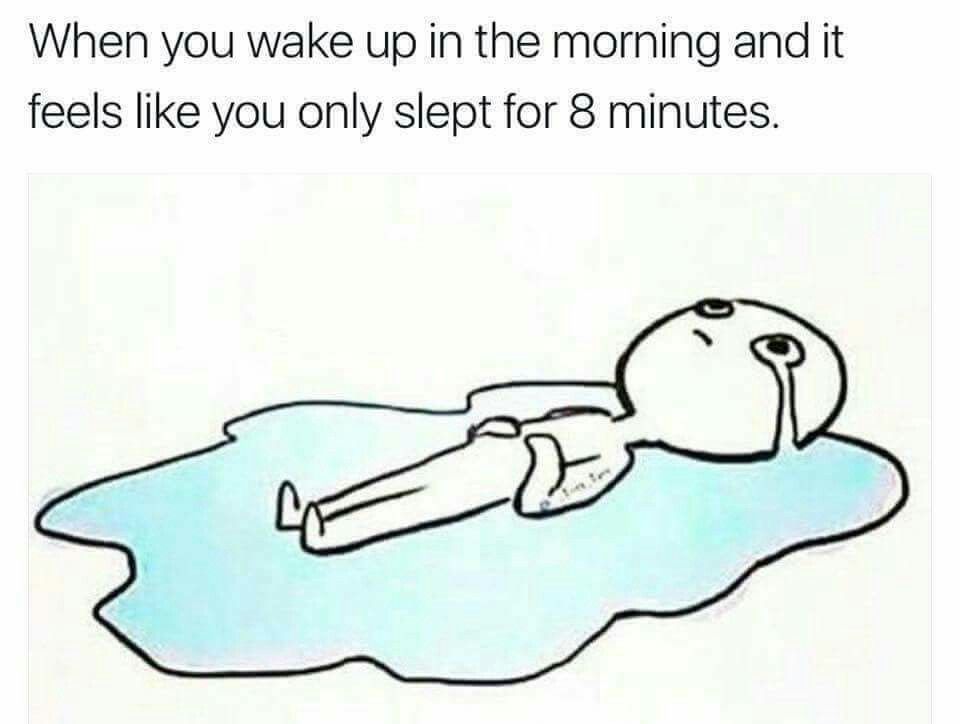 Many admit that they experience a “passionate desire” to get back into bed – they just have to try to get out of it.
Many admit that they experience a “passionate desire” to get back into bed – they just have to try to get out of it.
It is important to know that you are unlikely to ever be diagnosed with dysnia on its own. This is usually a symptom that indicates possible depression or chronic fatigue syndrome.
To understand if someone you know is suffering from dysania or klinomania – a similar term that describes the desire to stay in bed all day – Dr. Selter advises first to make sure that such people are doing well with physical well-being.
Image copyright Getty Images
After that, he will ask the patient what exactly is bothering him. Such a conversation may end with a diagnosis of depression. It is this that often causes a range of effects that manifest themselves in physical well-being, says Selter.
“Sleep disturbances, lethargy, early awakenings are all physical signs of depression,” he adds. a glass of water.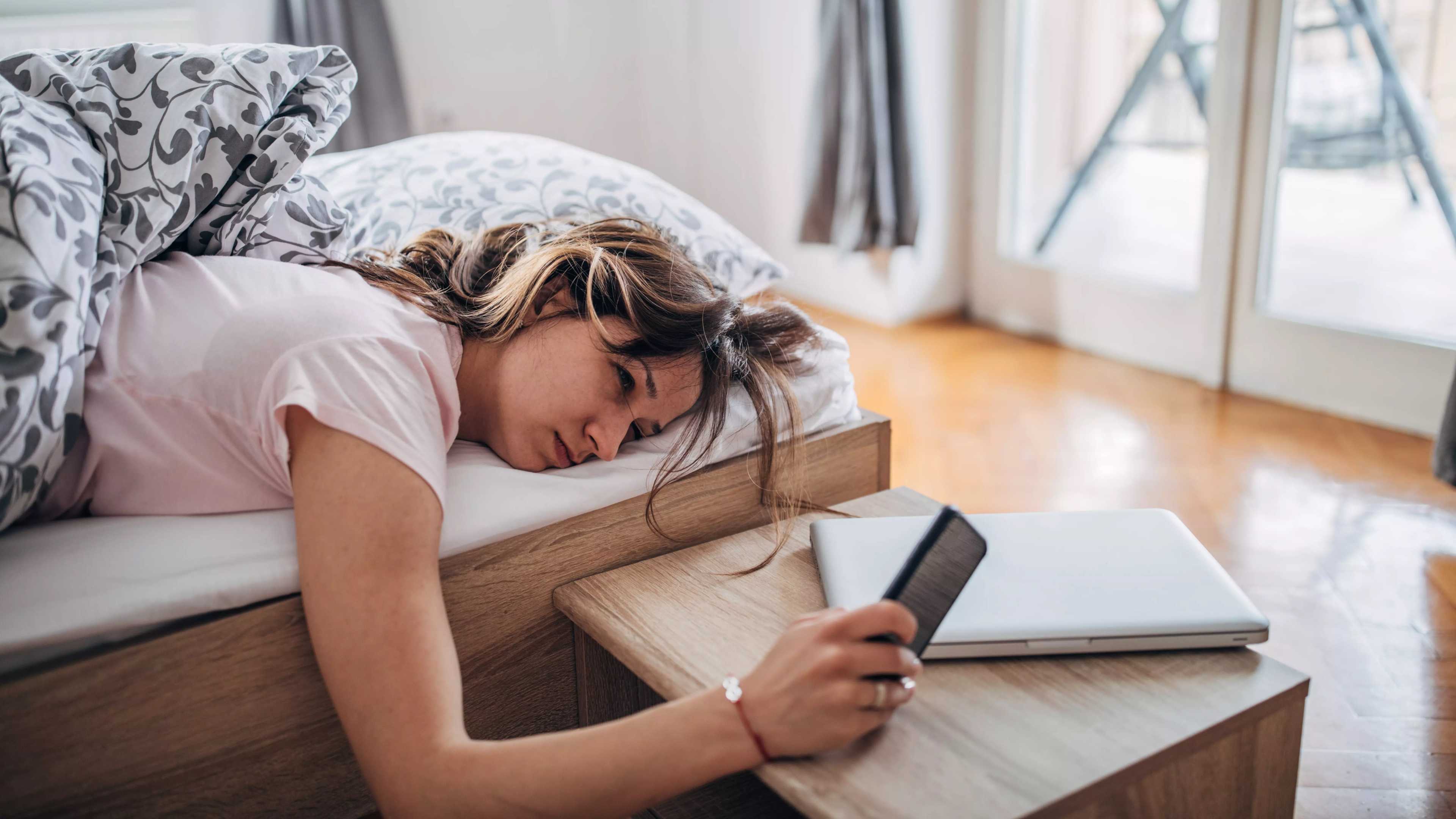 ”
”
If there are no other symptoms, this may mean that such people are simply afraid to get out of bed. In this case, it is not the same as disania.
If you’re not sure if your sleepiness is normal, try changing your habits.
First, try to keep track of how much sleep you get. Most adults need 6-9 hours of sleep. Feeling relaxed is also key – try taking a bath or doing some yoga asanas, for example.
Keep distracting objects, such as phones and laptops, away from you. And finally, if all this does not help, you can try to have sex – unlike all other types of physical activity, this will definitely increase your drowsiness.
If this is not enough and your inability to wake up is causing you stress and anxiety, you should see a doctor.
Of course, you can justify everything as simple laziness, but you can’t be sure until you check it.
Follow us on Twitter and Telegram
Causes and symptoms of disturbed sleep patterns
Most people experience some kind of sleep problem from time to time.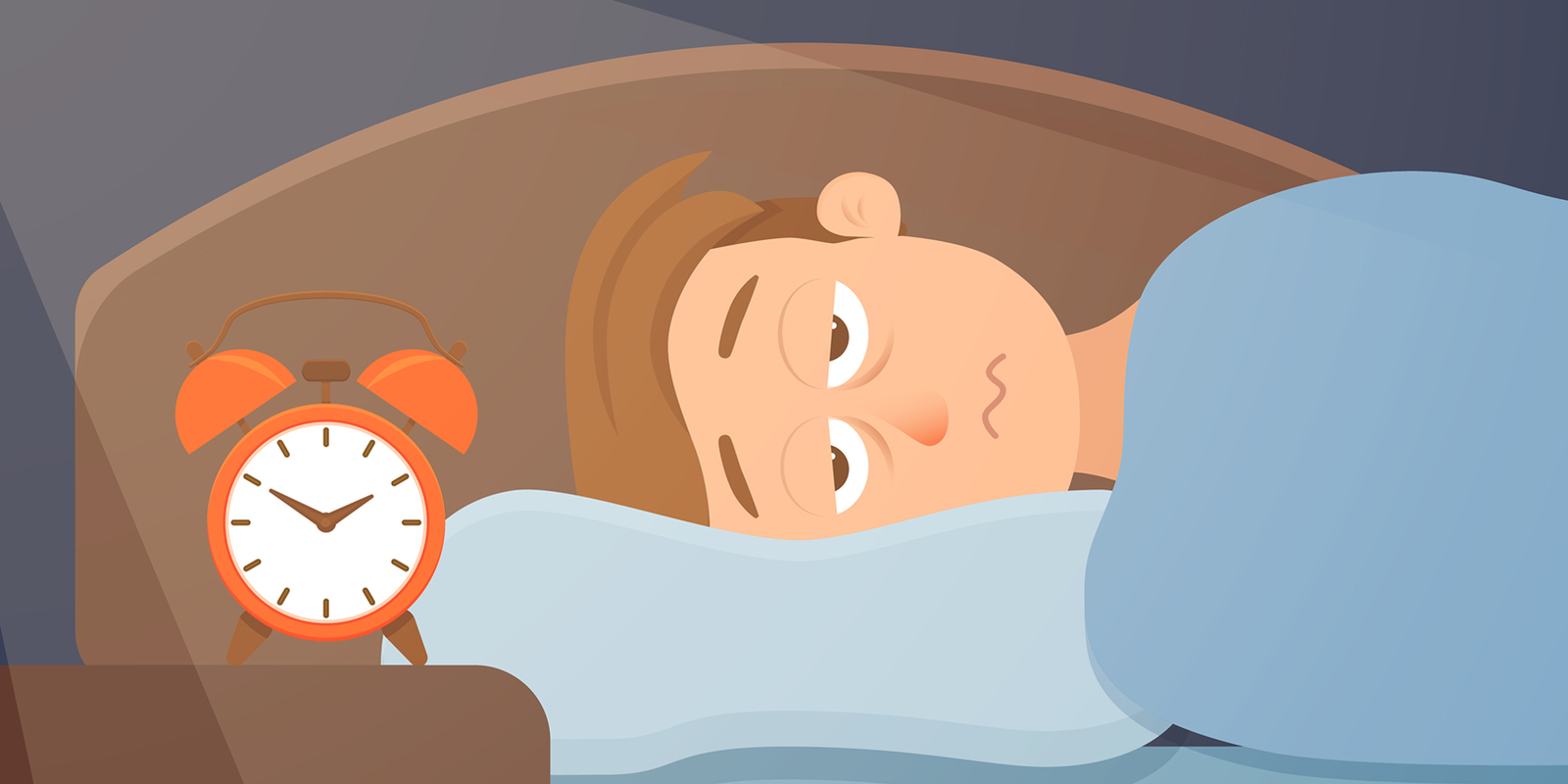 But when these problems become a familiar part of everyday life, this is already a serious reason to think and turn to a specialist.
But when these problems become a familiar part of everyday life, this is already a serious reason to think and turn to a specialist.
Sleep is one of the health indicators. People who do not suffer from any disease usually sleep well, while those who experience recurring or persistent sleep problems are more likely to have psychological or physical impairments that can be either minor or serious.
It is worth even one day to sleep badly – and this affects the mood, performance, stress resistance. And when the problem is repeated or ignored, it can lead to a serious deterioration in the functioning of the whole organism, reduced productivity and stress.
Insomnia, for example, can, if not cause, then exacerbate asthenic and depressive states, anxiety mental disorders.
Long-term sleep disturbances lead to a persistent increase in the production of the hormone cortisol, which puts the body in a state of constant stress and tension. As a result, metabolism is disturbed, hormonal imbalance occurs.
22.02.2019
To understand whether sleep disorders are the body’s response to difficult life situations or other external factors, or whether they serve as a marker of more serious diseases, the following survey will help:
● Do you feel very sleepy during the day?
● Do you have excessive irritability?
● Do you find it difficult to stay awake if you watch TV, read, work at the computer, or simply sit in one position?
● Do you find it difficult to drive a car because you feel tired and your reactions are slow?
● Do you have difficulty concentrating?
● Do you hear from others that you look tired?
● Do you observe a slow reaction?
● Do you find it difficult to manage your emotions?
● Can’t sleep for hours?
● Do you have to use caffeine or other energy drinks to keep yourself going?
If you answered yes to at least one question, most likely you have a sleep disorder that needs to be corrected.
Sleep disorders occur at any age
When do sleep disorders become a problem?
● Difficulty falling asleep in the evening, inability to fall asleep after waking up at night.
● Frequent awakening during the night, shallow, interrupted sleep.
● Sleepiness and poor performance during the day.
● The need to take some action to get yourself to sleep (drink sleeping pills, achieve perfect silence, take a bath, etc.).
If a person usually wakes up in the early morning hours, from about 3 to 5 am, feels unreasonable anxiety and cannot fall asleep, this condition may accompany the onset of depression or neurosis, so it is necessary to consult a neurologist for advice.
When insomnia is not a symptom of an illness, in most cases it can be managed with lifestyle changes, without medication.
Insomnia
Night terrors interfere with proper rest
Symptoms of insomnia: 9 0126
Apnea
disease, a marker of depression. Also, nightmares can occur while taking certain medications, including antidepressants, watching horror movies and excessive computer games.
Also, nightmares can occur while taking certain medications, including antidepressants, watching horror movies and excessive computer games.
One of the most common sleep disorders is insomnia. It can be caused by lack of physical activity, jet lag, medications, high caffeinated drinks in the diet, watching TV, or being in front of a computer or smartphone screen before bed. Or it can be a symptom of any disease – both mental and physical.
This disorder is characterized by a temporary cessation of breathing caused by the blockage of the upper airways, which leads to frequent awakening. As a result, a person feels irritability, exhaustion, a decrease in labor productivity, often depression joins this state.
The causes of sleep apnea may be congenital weakness of the muscles of the palate and pharynx, smoking, alcohol abuse, excess weight, insufficiently high pillow.
Apnea symptoms:
● Chronic snoring.
● Feeling of suffocation while sleeping.
● Frequent pauses in breathing during sleep.
● A person who wakes up in the middle of the night feels short of breath, dry throat, headache or chest pain, nasal congestion.
● Sleepiness during the day, feeling overwhelmed Photo of how many hours you slept.
Sleep apnea is a potentially life-threatening sleep disorder that can nevertheless be successfully treated.
Restless legs syndrome
Manifested as an inability to fall asleep due to an irresistible desire to move the limbs: often the legs, although sometimes the arms. No matter how a person lies down, he feels uncomfortable and wants to change his position.
The causes of this syndrome can be both hereditary and caused by neurological or somatic diseases, including diabetes mellitus, thyroid disease, uremia, anemia, deficiency of certain vitamins and trace elements.
Restless legs syndrome symptoms:
● Unpleasant sensations in the muscles that make you want to move your legs, lie down more comfortably: tingling, pain, feeling of heaviness. Sensations subside during movement or massage.
● When sleep does occur, it is interrupted or accompanied by twitching of the limbs.
Narcolepsy
This sleep disorder occurs due to brain dysfunction, resulting in impaired control of sleep and wakefulness, reduced synthesis of orexin – a hormone that is responsible for wakefulness. The causes of narcolepsy are not well understood; according to one version, it is hereditary in combination with external provoking factors, such as past viral or infectious diseases. The condition is potentially life-threatening and requires mandatory correction.
Symptoms of narcolepsy:
● Sudden loss of muscle control or feeling of weakness, especially during moments of emotional stress.
● Temporary paralysis after waking up.
● Uncontrolled and rapid falling asleep during daytime, a person may fall asleep even while driving or talking. After sleep, there is a feeling of cheerfulness.
● Hallucinations during the transition between sleep and wakefulness.
Nightmares
Symptoms of nightmares:
● Cries, moans during sleep.
● Awakening abruptly and feeling frightened.
● Rapid breathing and palpitations.
● Increased perspiration.
● Pressure increase.
Somnambulism
A disease better known as sleepwalking. Manifested as physical activity while in a state of sleep, a sleeping person can do ordinary household chores: turn on the TV, brush his teeth, clean up. At the same time, his eyes are open, he can navigate in space, answer simple questions, but his actions are unconscious and after waking up he does not remember what he did.
At the same time, his eyes are open, he can navigate in space, answer simple questions, but his actions are unconscious and after waking up he does not remember what he did.
The causes of the phenomenon include lack of sleep, epilepsy, fever, taking certain medications, alcoholism, drug addiction, high levels of stress and anxiety.
Symptoms of somnambulism:
● Moving around and performing simple operations while asleep.
● Sleep in a sitting position.
● Sleep talking.
● The person wakes up in a different place from where he went to bed.
Bruxism
Bruxism manifests itself as grinding or tapping of the teeth during sleep and may occur several times a night.
The causes include neurosis, high stress levels, mental imbalance.
Symptoms of bruxism:
● Pain in the muscles of the face, temples, jaws.
● Ringing in the ears.
● Morning migraines, headaches.
● Erasure of hard tissue of teeth, development of caries and inflammation of the gums.
How to help yourself cope with sleep disorders
Sleep disorders can be caused by various reasons, so an individual approach is important for their elimination. It is important to be examined to make sure that sleep disturbances are not the result of diseases that require immediate treatment.
Regardless of this, it is necessary to establish a regimen and improve sleep hygiene. Just by exercising, being outdoors more often, limiting the use of gadgets and TV two hours before bedtime, you will already feel improvements.
In the task of getting rid of sleep disorders, an individual approach is very important. Only in this case, therapy will bring the most effective result in the shortest possible time.
In recent years, new effective methods for the treatment of sleep disorders have appeared, including translingual neurostimulation (TLNS) – a non-invasive effect on the brain through stimulation of tongue receptors.